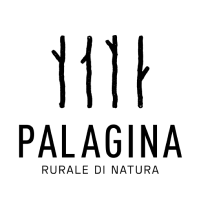The 2022 season will be better than the previous one for the open-air segment, with Italy as the leading market and a (more or less marked) recovery in international demand. With a forecast of between 48 and 45.4 million nights spent – around 54% by Italians – and growth compared to 2021 volumes ranging from 8% in the best-case scenario to 2% in the worst-case one, the open-air segment in the Italian peninsula is preparing to confirm the positive trend recorded in 2021 (+38% compared to 2020), becoming increasingly consolidated in the current tourism scenarios. These are the encouraging signs that emerge from the forecasts for the national sector in the new edition of the Outdoor Tourism Observatory by Human Company, the Florentine group that is a leader in Italy in the outdoor hospitality sector, produced in collaboration with THRENDS, a company specialising in analysis and strategies in the tourism & hospitality sector.
A new scope and two scenarios
While the last edition in 2021 referred to the outdoor hospitality sector in the broadest sense of the term – including not only campsites and tourist villages, but also mountain huts and farm holiday centres – this year's analysis focuses on a more restricted scope, that of open-air travel and on campsites and camping villages as the reference accommodation facilities. This choice makes it possible to focus on the development of the segment, outline its trends and provide a demand forecast for summer 2022.
Starting from the current macro-economic scenario, influenced first and foremost by the war in Ukraine and complicated by a pandemic situation that is still uncertain, although on the road to normalisation, and using ISTAT and EUROSTAT sources for the history of the sector, the 2022 Observatory hypothesises two possible scenarios for open-air tourism: the resolution of the conflict by 15 May with a significant increase in the flow of visitors from Germany, Austria and Switzerland and from central and northern European countries or the continuation of the war with a consequent increase in instability, insecurity and a generalised state of alert.
The best-case scenario sees 48 million nights spent with a forecast growth compared to last year (+8%) and close to the pre-Covid results of 2019 (-14%), with a total expenditure generated of €2.55 billion against an average spend of €53 per guest per day. Against this backdrop, the Italian market stands at 26 million nights spent in campsites and camping villages across down only 5.2% on the pre-pandemic results of 2019. A figure that is part of the process of recovery and growth: if in 2021 it had been moderate (+0.5% due to the lack of confidence in the shift between May and June), in 2022, the presence of Italians is likely to increase by over 12 percentage points, recovering in the first part of the season, stabilizing in the peaks of the season and confirming a growing trend in the final part of the season. In the worst-case scenario hypothesized in the report, the estimated number of nights spent would stand at 45.4 million, marking a substantial standstill compared to last summer's levels (+2%) and with a more marked drop compared to 2019 (-18%) for an economic impact of €2.41 billion. In this case, it is the foreign market that slows down the number of nights spent, while the Italian market remains substantially stable at 25 million (+8% compared to 2021 and the same percentage but down on 2019).
The uncertainty of the global scene affects not only the number of nights spent but also the behaviour of both domestic and international tourist demand: the reduction in the booking window continues, with a consequent increase in last-minute bookings, and there is still a growing demand for flexible fees that can protect against exposure to last-minute risks, while the repercussions of the conflict but also of the pandemic period on the increase in the price of raw materials and high fuel prices affect the availability of funds for holidays and their duration, with a preference for shorter but possibly more frequent periods.
Foreign Markets
Incoming visitors will be crucial to give further impetus to the season. In the best forecast for the summer of 2022, the foreign market will see an increase of almost 8% compared to 2021, bringing it to around 22 million nights spent. In the most pessimistic scenario for international markets, it is estimated that the flow of tourists will be in line with that recorded in 2021 (-0.4%) for a total of around 20 million nights spent.
With regard to the forecast for nights spent for the top 5 foreign markets (Germany, Austria, Switzerland, the Netherlands, and France accounted for 88% of all international visitors in 2021), the best-case scenario estimates a general increase next summer with an average of more than 9% more nights spent (equivalent to around 19.5 million nights spent by guests from the top 5 foreign markets) and volumes tending to fall back in line with 2019 figures for the DACH markets (range between -4% and -5%). The Netherlands and France remain furthest from the last pre-Covid 2019 year (-31.8% and -36.6%, respectively). The worst-case scenario presents a situation that remains unchanged from last season, which essentially confirms the 2021 volumes with around 18 million nights spent (range between +1.7% and -2% compared to 2021).
For the other relevant markets, which generally account for between 2% and 3% of the entire foreign market, such as Denmark, Poland, the Czech Republic and the UK, the forecast for the coming season can vary greatly depending on the scenario. For Eastern markets, such as Poland and the Czech Republic, the impact of the Ukrainian-Russian crisis is very significant. For northern European markets, such as Denmark and the UK, the main impact factor is higher prices and, therefore, a reduced ability to spend and travel.
The six new trends in the open-air sector
In order to better understand what is happening in the open-air tourism market, and, more generally, in outdoor tourism, it is necessary to observe its developments in recent years. If, on the one hand, the pandemic has brought people closer to a concept of experiential tourism, in contact with nature, more aware and close to people, on the other hand, the open-air segment has turned over a new leaf, offering quality services and all kinds of comforts.
Thanks to technology, outdoor experiences have now become mainstream: the world of the outdoors is no longer seen as cheap, difficult and for the few, but has become cool, easy and within everyone's reach. Similarly, the evolution of needs has transformed the open-air sector into a way to deliver services to allow guests to enjoy their stay to the full both inside the facilities (from pitches to restaurants and shopping) and outside, with a wide and diversified range of experiences. This is how the open-air sector also represents wellness, in the sense of natural well-being leading to greater self-care and relaxation: an objective that open-air tourism already has in its DNA. Just like its green nature: and if it is true that the concept of sustainable travel is on everyone's lips, it is equally true that today's travellers want to find solutions that are already sustainable and enable them to be so in turn. One of the most recent outdoor trends is certainly the sharing economy: this is confirmed by the boom in the last two years of sharing economy platforms applied to open-air tourism, such as Yescapa (campervan rental platform), Goboony (campervan rental platform) and Click&Boat (boat rental platform).KEY NUMBERS
- 48 million. The forecast of the number of nights spent in campsites and camping villages in Italy for summer 2022 in the best-case scenario (-14.1% compared to 2019; +8% compared to 2021)
- 45.4 million. The forecast of the number of nights spent in campsites and camping villages in Italy for summer 2022 in the worst-case scenario (-18.9% compared to 2019; +2% compared to 2021)
- 39.2 million. Nights spent by tourists in the camping sector in 2021 (-28% compared to 2019; +39.1% compared to 2020)
- 35.5 million. Nights spent by tourists in the camping sector in summer 2021 (-23% compared to 2019; +34% compared to 2020; summer is defined as June to September)
- 90%. The increase in nights spent by foreign visitors between 2021 and 2020 for the camping sector (18.1 million nights spent, or -33% compared to 2019). The Italian camping market recorded +13% compared to 2020 (21.2 million, -23% compared to 2019)
- 286 million. Nights spent by tourist visitors in Italy in 2021 (compared to 2019: -18% Italian market; -51% foreign market)
- 25.9-25 million. The forecast range of nights spent by Italian camping visitors for summer 2022 (-5.2%/-8.7% compared to 2019; +12.2%/+8% compared to 2021)
- 22/20.3 million. The forecast range of nights spent by foreign camping visitors for summer 2022 (-22.7%/-28.6% compared to 2019; +7.9%/-0.4% compared to 2021)



